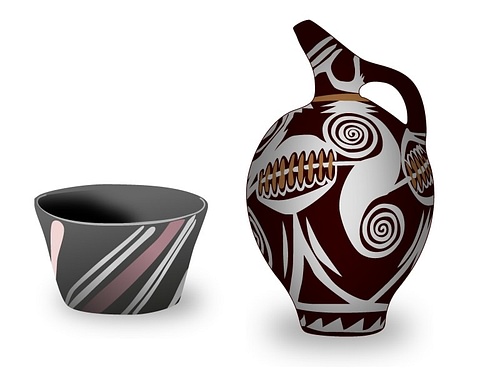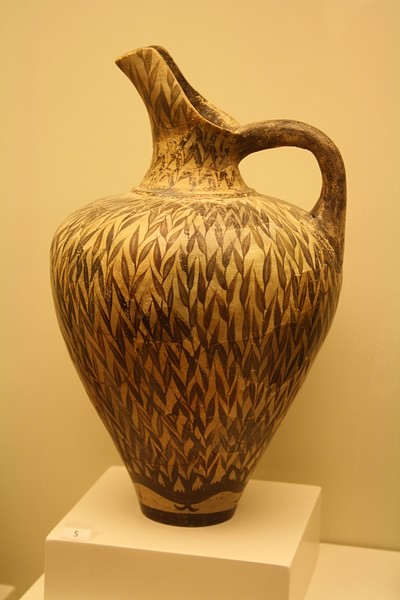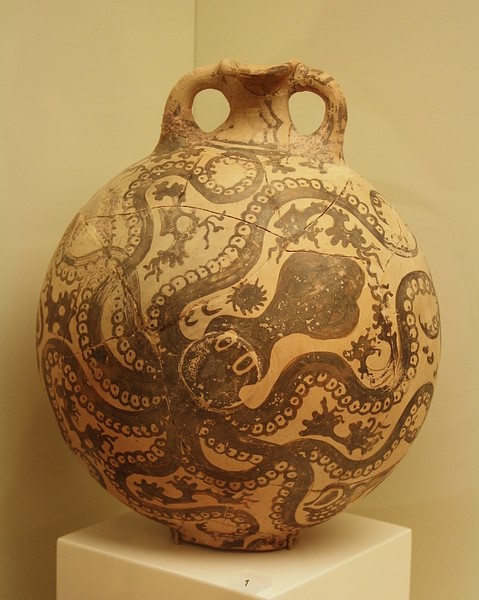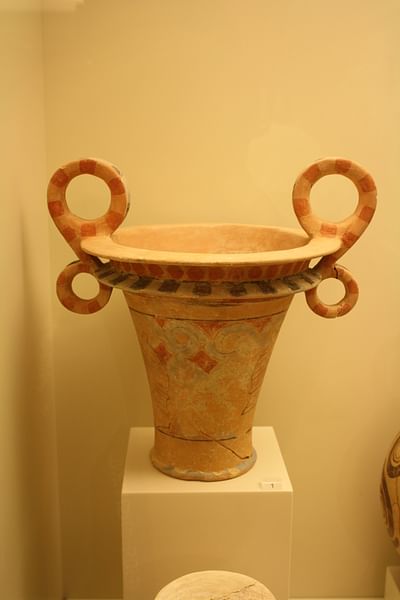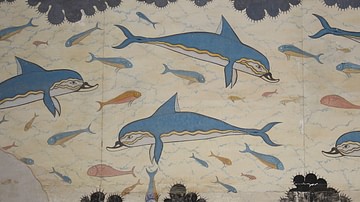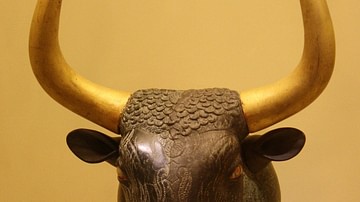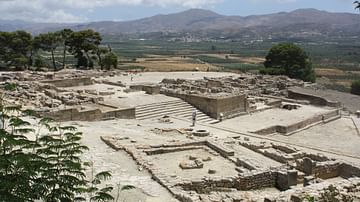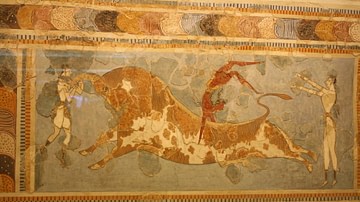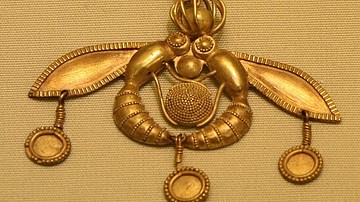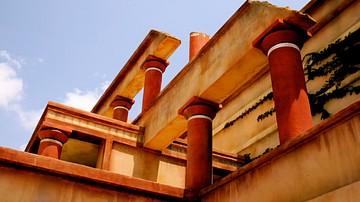The ever evolving pottery from the Minoan civilization of Bronze Age Crete (2000-1500 BCE) demonstrates, perhaps better than any other medium, not only the Minoan joy in animal, sea and plant life but also their delight in flowing, naturalistic shapes and design.
Kamares Style
Following on from the pre-palatial styles of Vasiliki (with surfaces decorated in mottled red and black) and Barbotine (wares with decorative excrescences added to the surface), the first distinctive Minoan style was polychrome Kamares ware (so named after the cave sanctuary in Crete in which many examples were found). Probably originating from Phaistos and dating from the Old Palace period (2000 BCE - 1700 BCE) its introduction was contemporary with the arrival of the pottery wheel in Crete. The distinctive elements of Kamares pottery are red and white designs, often in dense, vibrant arrangements, on a black background. Most frequent are curves and spirals but other designs include tassels, rosettes, palms, circles, dots, ribbons, stripes and lattices. On occasion, there are also impressionistic fish and polyps representations which foreshadow the coming Marine style. Schematic human figures are also found on Kamares ware but to such a point of abstraction that they become almost an element of design. The wares themselves were beaked jugs, cups, pyxides (or small boxes), chalices, pithoi (very large hand-made vases, sometimes over 1.7m high, used for storing oil, wine and grain, elaborately decorated and often inscribed with Linear A describing their contents) with occasional fruit stands, craters and rhytons (libation vessels). Sometimes, shells and flowers were also added in relief.
Another addition to the potter's repertoire in this period (ca. 1850 BCE) was the Eggshell style, a sub-group of Kamares. This is similarly decorated to Kamares but with vessel walls much thinner, as little as 1mm in thickness. Small cups are the most common example of this style.
Marine & Floral Style
With technological advances in material, firing at higher temperatures and faster pottery wheels, the New Palace period (ca. 1600 BC to 1450 BCE) saw an evolution both in form and design. More slender vases, tapering at the base became common and new designs appeared such as the stirrup jar with one real opening and a second false one with two handles. In terms of design, firstly, there was a move away from the use of white and secondly, a reversal to using dark colours (from brown to dark red) on a lighter background (usually yellow). Spirals and lines became less common as the central theme but remained in lesser areas such as around handles and necks. Plants and marine life now took centre stage. The Floral style most commonly depicts slender branches with leaves and papyrus flowers. Perhaps the most celebrated example of this style is the jug from Phaistos which is entirely covered with grass decoration.
The Marine style, perhaps, produced the most distinctive of all Minoan pottery with detailed, naturalistic depictions of octopuses, argonauts, starfish, triton shells, sponges, coral, rocks and seaweed. Further, the Minoans took full advantage of the fluidity of these sea creatures to fill and surround the curved surfaces of their pottery in a truly unique artistic style which effortlessly conveys the obvious love these island people had for the sea.
Other subjects on pottery contemporary with the Marine and Floral styles may be grouped together as representing either geometric forms or religious imagery. These latter include bull's heads, double axes and sacral knots.
Sarcophagi in terracotta, perhaps imitating earlier wooden coffin chests, were also produced throughout the Minoan period. Relatively small (as the body was folded into them), they are most often chest or bathtub shapes and depict both designs seen in contemporary pottery (painted outside and on the interior) and sometimes funeral rituals in fresco.
New Palace Style
From 1450 BCE a new style develops, perhaps influenced by increasing contact with Mycenaean culture from the Greek mainland and predominantly found in Knossos. Typical examples are the three-handled amphora, squat alabastron vessels, goblets and several unusual pieces including ritual vessels with figure of eight handles and a libation jug covered in spiky projections. These are decorated with much more schematic representations than the previous styles. Papyrus, lilies and octopuses become less naturalistic and more stylised and abstract. Whilst religious motifs continue to be seen, birds appear for the first time on pottery, as do helmets and shields.
The Minoan styles in pottery would continue to be influential both through the export of both wares and potters and painters to the Greek mainland and through the Mycenaean adoption and adaptation of many of the distinctive Minoan features mentioned above.
